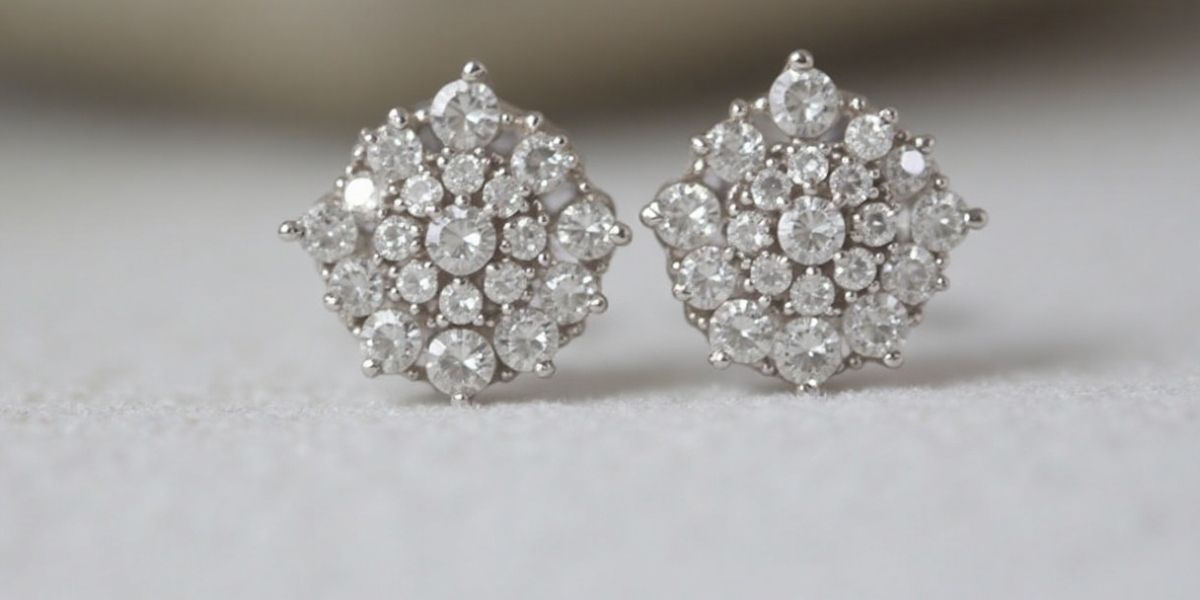Lab-grown diamond earrings have rapidly gained popularity in the jewelry market, offering a sustainable alternative to traditional mined diamonds. With approximately 70% of consumers viewing them as both eco-friendly and affordable, it's no wonder they've become such a sought-after choice. However, not all lab-grown diamond earrings are created equal, and quality can vary significantly between different options. This guide will help you identify high-quality lab grown diamond earrings with confidence, ensuring you get the best value for your money.
Understanding the Basics of Lab-Grown Diamonds
What Are Lab-Grown Diamonds?
Lab-grown diamonds are created in controlled laboratory environments using two main methods: High-Pressure High-Temperature (HPHT) or Chemical Vapor Deposition (CVD). Despite being created in a lab, these diamonds have the same chemical and physical properties as natural mined diamonds. They're made of carbon atoms arranged in the same crystal structure, making them genuine diamonds in every scientific sense.
Pros and Cons of Lab-Grown Diamonds
The most attractive benefit of lab-grown diamond earrings is their cost—typically 30-40% less than comparable mined diamonds. They also have a significantly smaller environmental footprint, with reduced energy usage, water consumption, and land disruption compared to traditional diamond mining operations.
However, one potential drawback is that quality can vary between manufacturers. Some lab-grown diamonds may have more flaws or imperfections than others, making quality assessment crucial before purchasing.
How They Are Graded
Lab-grown diamonds are graded using the same 4 Cs system used for natural diamonds:
- Cut: How well the diamond is shaped and faceted
- Color: How colorless the diamond appears
- Clarity: How free from inclusions and blemishes the diamond is
- Carat: The diamond's weight
Some certification labs also provide additional assessments specific to lab-grown diamonds, such as growth method and post-growth treatments.
Check the Certification and Lab Reports
Importance of Certification
Proper certification is the foundation of ensuring your lab-grown diamond earrings are high quality. A certificate validates all quality claims and ensures the diamonds meet industry standards. Without certification, you're essentially taking the seller's word on all quality aspects.
Reputable Certification Bodies
Look for certificates from well-recognized gemological laboratories such as:
- GIA (Gemological Institute of America)
- IGI (International Gemological Institute)
- HRD Antwerp
These organizations have established testing protocols specifically for lab-grown diamonds and provide trustworthy assessments.
What to Look for in Reports
A quality certificate should include:
- Detailed information on all 4 Cs
- Clear indication that the diamond is lab-grown (not natural)
- Growth method (HPHT or CVD)
- Any post-growth treatments applied
- Date of certification and laboratory credentials
Pay special attention to any notes about treatments, as some lab-grown diamonds undergo color enhancement processes that may affect long-term appearance.
Assess the Cut and Symmetry
Why Cut Quality Matters
The cut is arguably the most important factor in a diamond's beauty. A well-cut diamond reflects light beautifully, creating the sparkle and brilliance that make diamonds so desirable. In lab-grown diamond earrings, superior cut quality can compensate for slight deficiencies in other areas.
Key Features of a High-Quality Cut
Top-tier lab grown diamond earrings feature:
- Ideal proportions that maximize light return
- Excellent symmetry with perfectly aligned facets
- High polish that creates a smooth, mirror-like surface
Studies show that a top-rated GIA-certified diamond can reflect up to 60% more light than a poorly cut one, significantly impacting visual appeal.
Visual Inspection Tips
Even without technical equipment, you can assess cut quality by:
- Using a jeweler's loupe to check for uniform facets
- Looking for even reflections when moving the diamond under light
- Checking that there are no dark or dull areas in the diamond
Examine Color and Clarity
What Makes a Perfect Color Grade?
Diamond color is graded on a scale from D (completely colorless) to Z (light yellow or brown). For lab-grown diamond earrings, grades D through F are considered exceptional, while G through J are excellent choices offering good value.
Higher color grades appear more transparent and are generally more valuable, but the difference between adjacent grades (like E and F) is often invisible to the untrained eye.
Clarity and Impurities
Clarity refers to the absence of inclusions (internal flaws) and blemishes (surface imperfections). The clarity scale ranges from Flawless (FL) to Included (I3).
High-quality lab-grown diamond earrings typically have clarity grades of VS (Very Slightly Included) or higher, meaning any inclusions are difficult to see even under 10x magnification.
To check clarity:
- Use a magnifying glass or jeweler's loupe
- Examine the diamond under bright, direct light
- Look for any visible dark spots, clouds, or lines
A recent case study comparing 50 pairs of lab-grown diamond earrings found that those with higher color and clarity grades consistently sold faster and commanded higher prices, confirming their perceived value.
Evaluate the Carat and Size Without Sacrificing Quality
Choosing the Right Carat
While larger diamonds are often desirable, bigger isn't always better when it comes to lab-grown diamond earrings. Larger diamonds tend to show color tints and inclusions more readily than smaller ones.
The Impact of Size vs. Quality
For truly high-quality lab-grown diamond earrings, balance is key. A slightly smaller diamond with excellent cut, color, and clarity will typically look more beautiful than a larger stone with lower grades.
Actionable Tip
Consider choosing earrings with diamonds that are slightly below common carat thresholds (like 0.9 carats instead of 1 carat). These "just-under" sizes often offer significant savings without a noticeable size difference, allowing you to invest in higher quality.
Purchase from Reputable Sellers
Why Trustworthiness Matters
Buying from reputable sellers is crucial when purchasing lab-grown diamond earrings. Established jewelers with strong reputations are more likely to:
- Accurately represent their products
- Provide genuine certification
- Stand behind their merchandise with satisfaction guarantees
- Offer fair prices relative to quality
How to Choose a Good Seller
Look for sellers who:
- Have established business histories with positive reviews
- Provide complete transparency about their diamonds' origins and qualities
- Offer detailed certification from reputable labs
- Have clear return and warranty policies
- Are willing to answer your questions about their products
A notable example is how top online retailers of lab-grown diamond earrings typically offer 30-day return policies and provide authentic certification from recognized labs, demonstrating confidence in their product quality.
Conclusion
High-quality lab grown diamond earrings combine proper certification, superior cut, excellent color and clarity grades, and appropriate carat weight. By understanding these quality indicators and purchasing from reputable sellers, you can confidently select beautiful, sustainable jewelry that offers exceptional value.
Always verify certification from trusted labs like GIA or IGI, conduct visual inspections to confirm craftsmanship, and prioritize cut quality for maximum brilliance. Remember that slightly smaller diamonds with better grades often appear more beautiful than larger diamonds with lower quality ratings.
With these guidelines in mind, you'll be well-equipped to select stunning lab-grown diamond earrings that satisfy both your aesthetic preferences and your budget.








